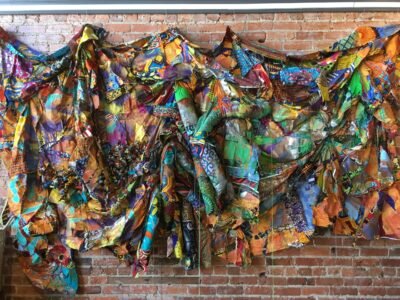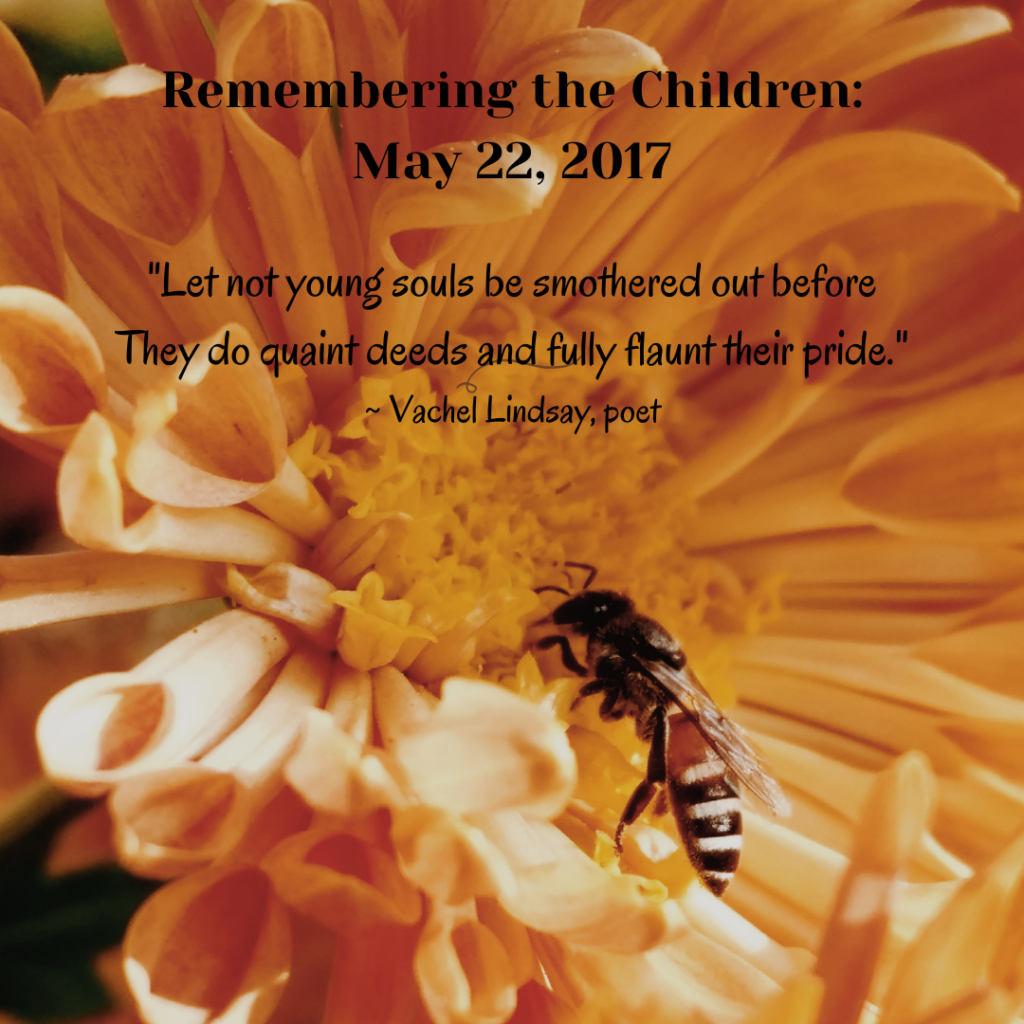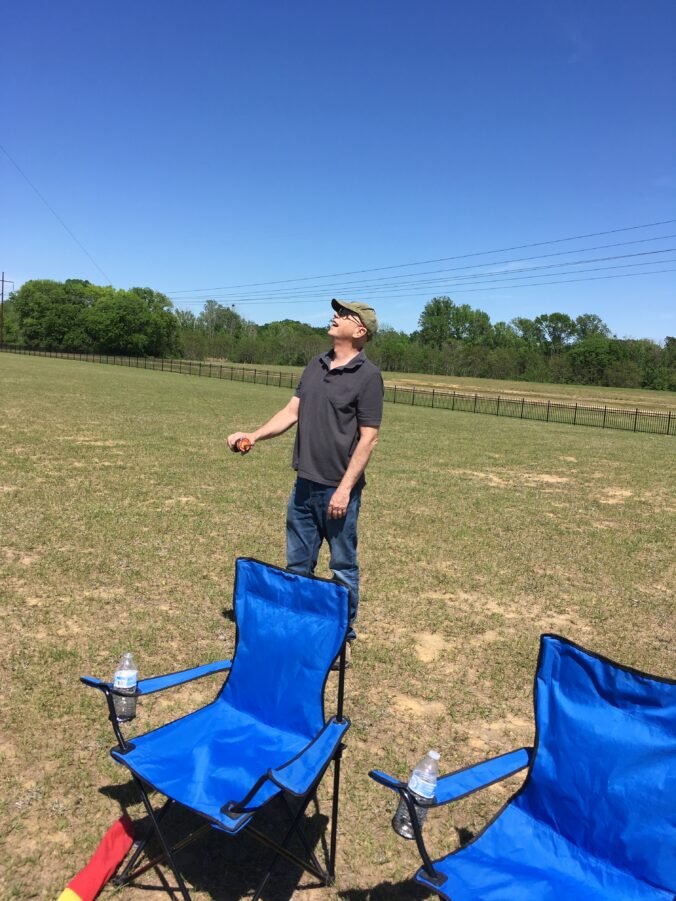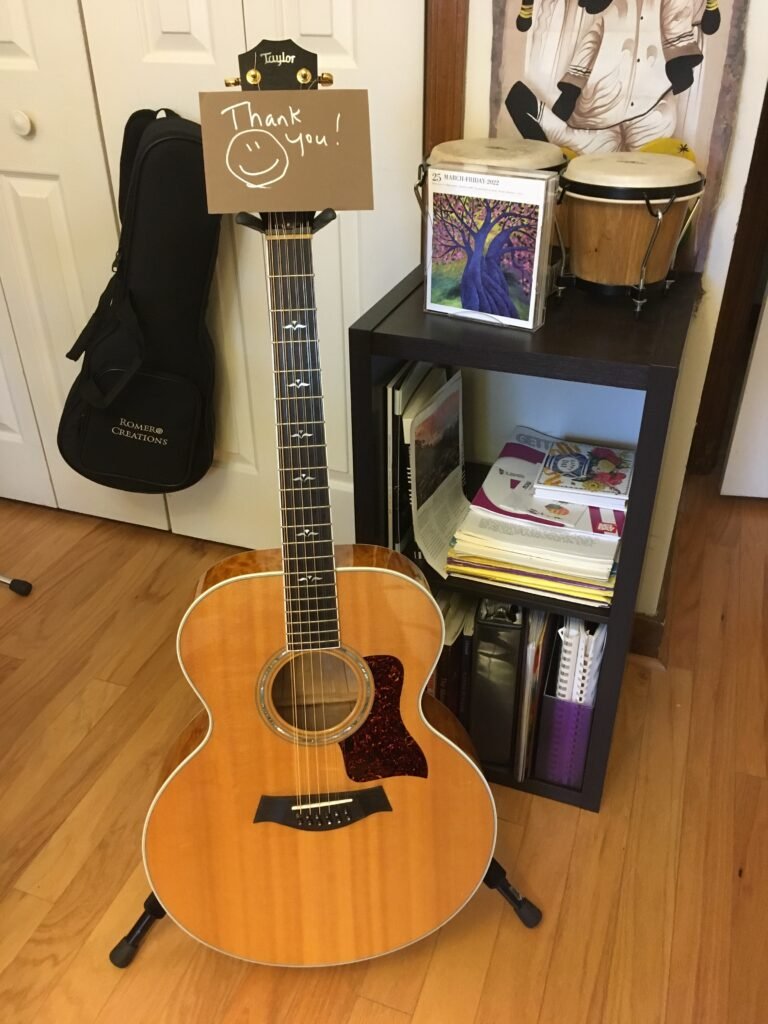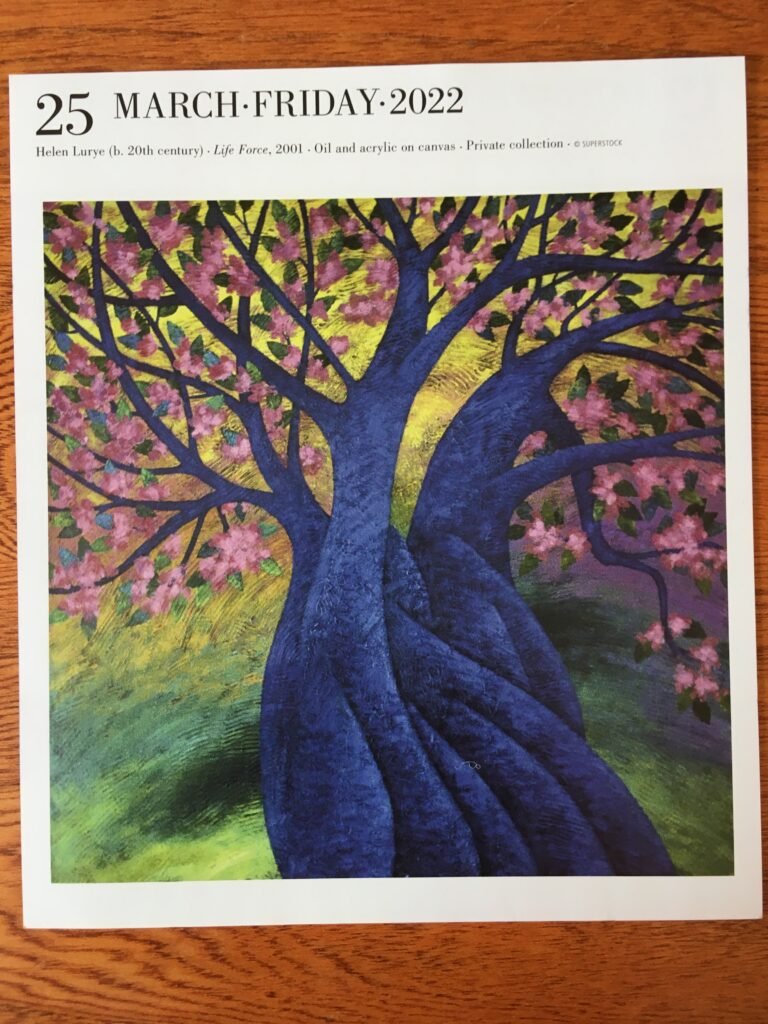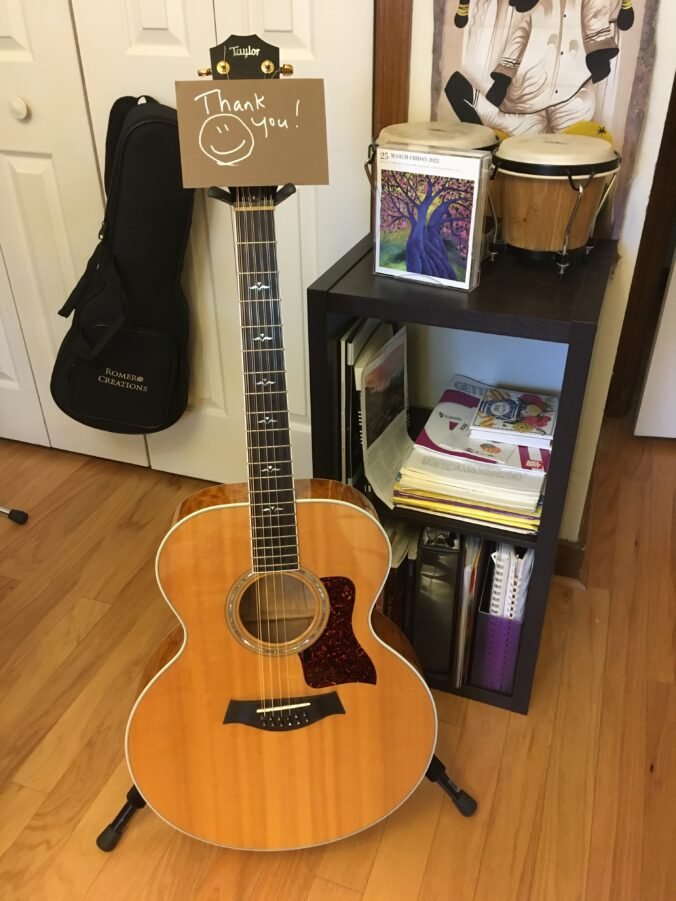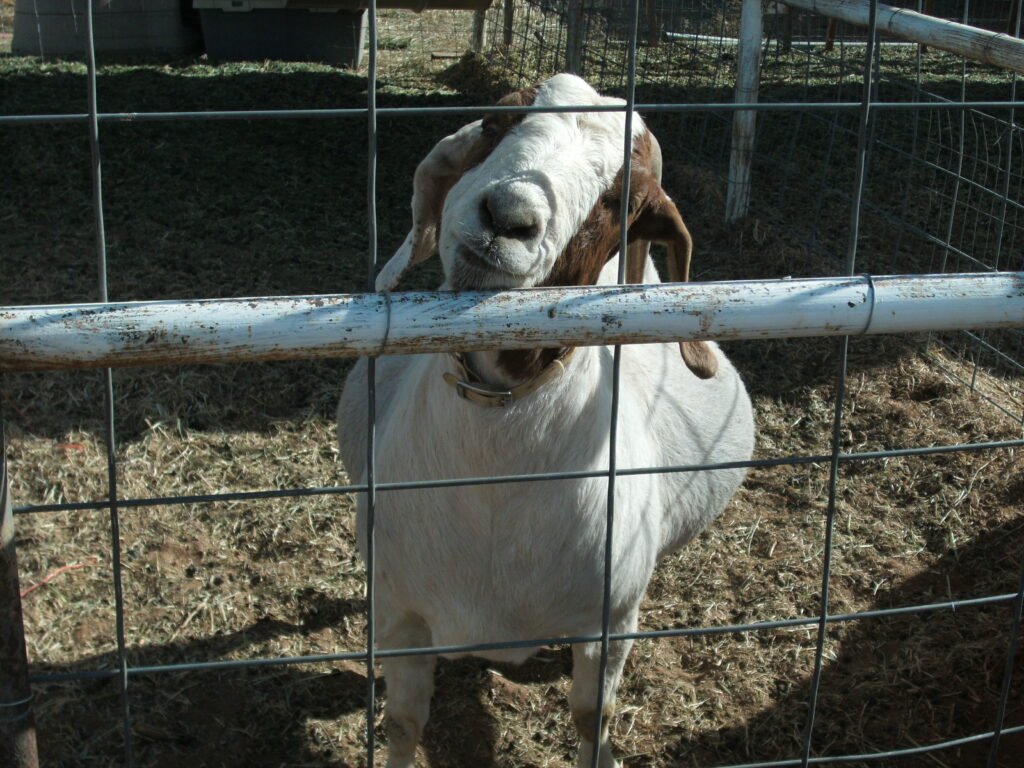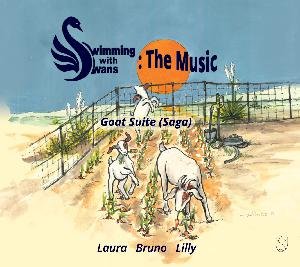Interspersed amongst my wrist issues, I managed to type out & post a few blog articles and maintain a certain level of creative lifestyle activity over the past 2+ months.
Wrist issues? you may ask, curious as to what that has to do with anything.
As an (he)artist, one needs to be vigilant in maintaining and caring for one’s tools of the trade. A good example of this would be my changing out Gracie’s & the Prisloe’s strings a while back. In the human realm, as a working musician, this care includes parts of my body. Specifically, my arms, wrists, hands and fingers.
Without getting too bogged down with procedural details, I’ll say that my search for a hand therapist quickly came up short since the ones I called, and I called quite a few, offer their services only to patients on referral from hand surgeons (at least here where I live). So, I made an appointment with the one out of only two local hand surgeons most of those hand therapists worked with, hoping for a diagnosis and then referral to a hand therapist for stretches, exercises and tips on how to baby and strengthen my hands/wrists.
Turns out, it’s a catch 22.
The surgeon, I learned after said appointment, only refers his patients to a therapist after he performs surgery on their hands. There is no middle ground (at least where I live). No intermediary non-invasive steps from the ‘problem’ to what may or may not be a needed surgery as an ‘only solution’. (FYI: I am not giving up on finding some medical professional to guide me in ways other than immediate surgery to aid in my long term hand/wrist issues).
During those 6 weeks waiting for the appointment, I did what I could to cope with the pain, hoping what I did intuitively (and also with a little help from Dr. Google) would do no harm. This included, but was not limited to, gentle stretches, use of craft gloves (yay for being a quilter!), soft arm socks as a form of gentle support and greatly reducing time at the keyboard.
In addition, I cancelled all upcoming rehearsals until after the doctor’s appointment. Say what? Rehearsals? Yep. I’d just begun a regular weekly rehearsal routine with a new musician friend (Banjo Guy).
Here is a piece I found by Guy Bergeron that beguiled us both – bringing this classically trained guitarist (me) and that bluegrass banjo player (him) together on common ground. It has become our mutually approved ‘set piece’ where we are meeting each other half-way stylistically and eager to explore a myriad of other collaborative musical possibilities. In three short sessions, we got the piece 75% down, with other music in the queue at various levels of development. Just sayin’… 😎
Banjo Guy and I met three times until the day of the fourth scheduled rehearsal. At that point, I reluctantly canceled due to fears of doing damage to my still painful wrists if I’d plowed ahead regardless of my body’s rebellious attitude. ?
When we talked that day, he suggested two things to enrich my time off the practice stool:
- Go to Art Fields
- Haul out the Hammered Dulcimer, set it up and play
I did the first, that very day!


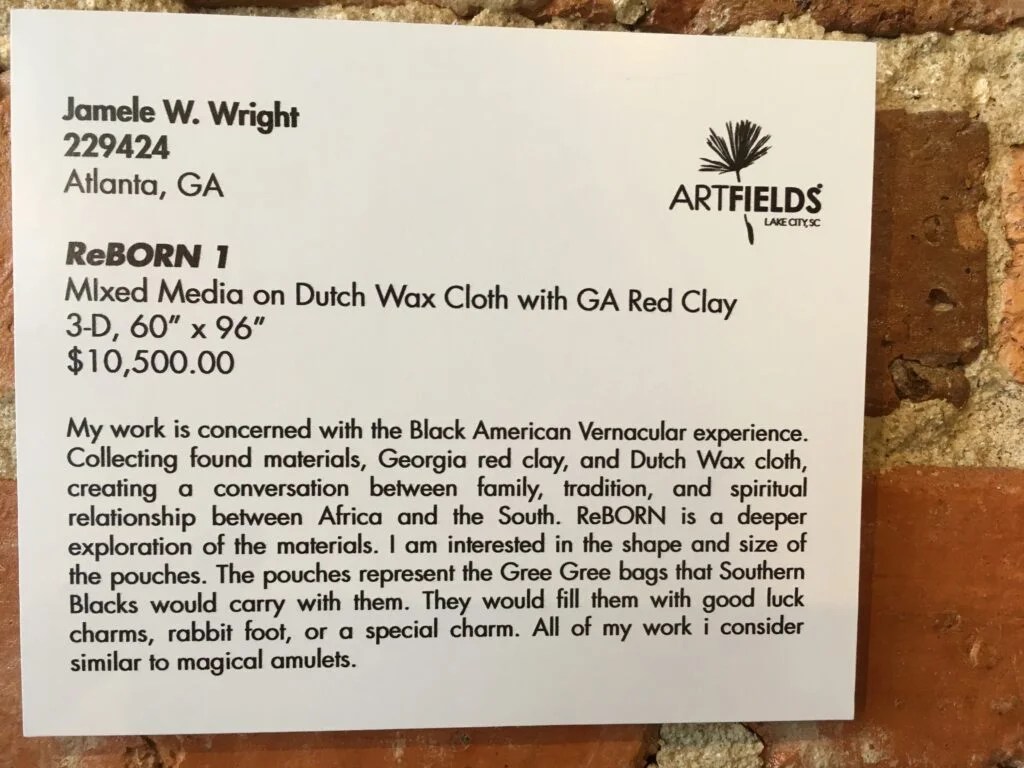
Please click here for an outstanding interview with Jamale W. Wright, an amazing regular-guy artist of exceptional talent – who uses fiber as a main element in his pieces.
And the second I did a few days later.
On the plus side, during those 6 weeks waiting for the appointment, I didn’t do a lick of heavy cleaning around the house. You know, scrubbing bathrooms, kitchen sinks and such. Not that I’m complaining on that front! (FYI: Hubby does his share of the housework, and lovingly took on my share in the interim).
So what exactly did I do to maintain & enable a “certain level of creative lifestyle activity” (besides the two items mentioned above)?
Stayed tuned for part two, where I’ll elaborate on my Hammered Dulcimer set up and related et all.
